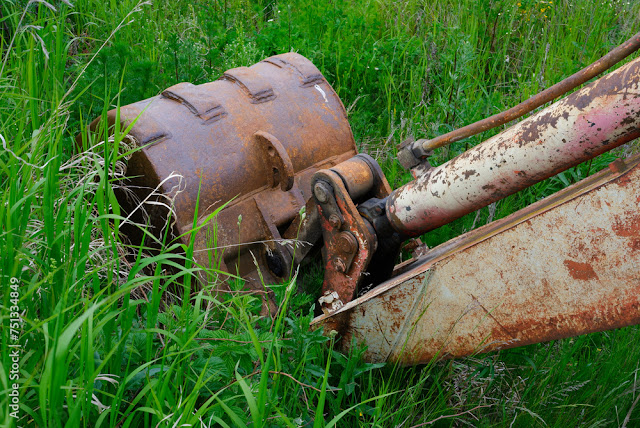- The Historical Origins of Inequality
Fascinating from P2P-Foundation!
Related:
Sunday, October 28, 2012
Four Scenarios for the Inevitable P2P Future
27th October 2012
Original article from P2P-Foundation here.
P2P and networked technologies are here to stay, are expanding, and will become the dominant technological format. Yet, that doesn’t mean at all that the future is a foregone conclusion. Around these technologies we will see political and social struggles that will involve ownership and governance (control), and also their mobilization by social forces having their own worldviews, interests and agenda.
To distinguish various futures, I have produced a impromptu four quadrant structure according to two axes:
1) one distinguishes the centralized vs. distributed control of p2p infrastructures (and on the right side, this tension is best expressed by global vs. local orientation)
2) the other distinguishes for-profit (let’s say ‘capitalist’) vs. for-benefit orientations (let’s say ‘commons’)
This gives us four quadrants:
Upper-Left: Netarchical Capitalism, is characterized by the centralized control of p2p infrastructures, with a for-profit orientation (think Facebook)
Bottom-Left: Distributed Capitalism, distributed control, but with a for-profit orientation, think the design of Bitcoin
Bottom-Right: a local for-benefit orientation, this characterizes the Resilient Communities approaches
Upper-Right: the Global Commons orientation, which does not forego the construction of a more just society at the global level
I haven’t had the time to write this out formally, but this unedited transcript, compiled by Jean Lievens, has my remarks on the subject, as recently given in Helsinki (video).
Transcript:
“So this is basically saying the following: given the fact that the peer-to-peer structures are given, they can be controlled separately or you can get distributed control. They can have a for-profit orientation or a for-benefit orientation, in short, capitalism or the commons as a way to say the same thing.
So we have four scenarios. First is centralised control with a for-profit orientation. This is what I call netarchical capitalism –the hierarchy of the network: net-archy right? A typical example would be Facebook. I think we can underline that in Facebook you do have a lot of horizontal dynamics, people share information, meet together, create stuff together, make revolutions, all kinds of stuff… using a capitalist platform, right? So you can do many things with Facebook. But you don’t control the design, the servers are centralized by a company and the monetization of your activity is almost exclusively in the hands of the platform. This is a problem. This is actually an unsustainable alternative. The way I explain it is the following. We have now the capability to exponentially increase the creation of use value, but it is only being monetized growing linear. So the gap between our capacity to produce value and the capacity to monetize it is growing apart further and further. Furthermore, the little bit that is monetized is being monopolized. So this is the wet dream of capital, right? Free labour. All the time, and you make all the profit. But it is unsustainable. Because who is going to buy your products if you don’t pay anybody? So this is what we call a value crisis, we are creating a value crisis in our society and precarity, because more and more activities are pushed to this area, where there is no feedback-loop; the value system is blocked as it were. These are systems where 100% of the value is created by the users. What is an empty platform? Nothing. So the value is created by the users, but is not realized by the users. So we have democratized the means of production but not the means of our livelihoods. This is the basic issue with this model.
Saturday, October 27, 2012
My Picture as a Puzzle
| This picture I made earlier this year from Glomdalsmuseet museum has become a puzzle |
Such things inspire me to continue adding photos to Wikimedia Commons.
Have a nice play!
Monday, October 15, 2012
Excellent Introduction to Alexander's Fifteen Fundamental Properties of Wholeness
I just found this excellent introduction to Alexander's 15 properties of life!
- The Fifteen Fundamental Properties of Wholeness
The degree of life which appears in a thing depends upon the life of its component centers and their density. Following are fifteen structural features which Christopher Alexander has identified as appearing again and again in things which have life.
Together, these fifteen properties identify the character of living systems. They are the principal ways in which centers can be strengthened by other centers. They are not independent, but rather rely on and reinforce each other. Things which are more whole, which exhibit more life, will have these fifteen properties to a strong degree. Conversely, the things in this world which are most lifeless will have these properties to the least degree. - TKWARead more and see excellent illustrations and photos of the 15 properties:
- The Fifteen Fundamental Properties of Wholeness
Tuesday, October 2, 2012
Krabat på fjelltur
| Publisert som dagens bilde i Oppland Arbeiderblad, s. 14, torsdag 4. oktober 2012. Se bildet på Origo her. |
Integrated Design
| Photo by rama_miguel on Flickr. (CC BY-SA) |
Could it be useful sometimes to replace the name permaculture with something else, because some people have wrong associations with the word? I’ve heard people discussing this, but they didn’t come up with any alternative. Here I have a suggestion: “integrated design”.
Subscribe to:
Posts (Atom)
Featured Post
Dagens demokrati kan ikke redde oss fra klimakrisen
Politikerne tror at løsningen på klimakrisen er å forsterke naturkrisen, ved å grave i filler naturen vår, for å plassere vindkraftverk på h...

-
From the PLANETIZEN May 24, 2010 Nikos Salingaros presents the case for demolishing a modernist eyesore in Rome and replacing it with a ...
-
By Christopher Alexander . Original text at First Things . Rose trellis of Generalife. It has taken me almost fifty years to unde...
-
Terningkast fem💓 Winter photography around the Stormyra Marshlands, part of the Totenåsen Hills, Norway, February 2025. Stock-bilde | Adobe...

